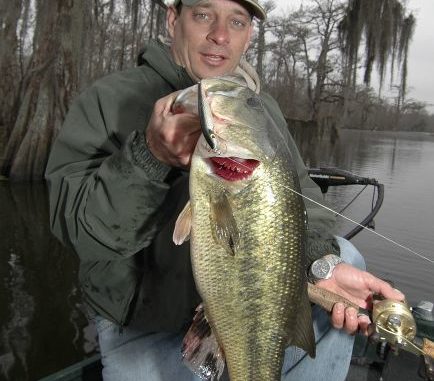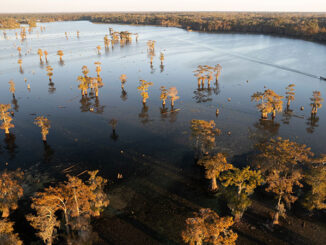
Fishing regulation imposed after Hurricane Andrew has not produced lunker bass, studies show.
The 14-inch minimum size limit imposed for Atchafalaya Basin bass following the devastation of Hurricane Andrew will be a thing of the past in a few months if a Louisiana Department of Wildlife & Fisheries proposal receives final approval.
And that’s fine with Denham Springs angler Darren Cooper.
“It’s hard to catch 14-inch fish,” Cooper said. “How many fish do you catch in that 13-inch range?”The agency also is recommending a seven-fish-per-man daily limit for two years as a transitional move to ensure the stock of bass isn’t crippled as anglers fill their freezers.
“I do like the idea of dropping it to seven fish,” Cooper said. “You have to protect it somehow because people will be gung ho when they drop it.”The LDWF presented the proposal to drop the size limit to the Louisiana Wildlife and Fisheries Commission, which will make the final decision.
The minimum size limit has prevailed since being implemented shortly after the 1992 hurricane that killed an estimated 200,000 million. Five million of the dead fish were bass, according to the LDWF.
It was intended to be temporary, just a means of protecting bass long enough to reproduce and bring the species back to a healthy population. But keeping the regulation was widely supported because of the misguided belief that it would help grow trophy bass in the Basin.
Although a few lunkers were caught there because of stockings of Florida-strain bass, the area never made the turn to become a trophy fishery.
LDWF has said overflow swamp is simply too harsh of an environment, with an abundance of predators and frequent tropical systems, to allow fish to live long enough to push much past the 14-inch minimum.
The move was signaled last year when the results of a three-year study of the fishery were released.
“What that showed is the 14-inch minimum will not produce a significant number of bigger bass,” Salyers said.
Surprisingly, studies have shown Atchafalaya Basin bass take 3.4 years to even reach the length at which they can be harvested.
LDWF’s Brac Salyers told commissioners that few bass live that long in the Basin, and almost none live longer than five year — not even close to enough time to put on significant weight.
While the aforementioned predators play a role in the short lifespan of Basin bass, Salyers also said bass just grow slowly.
“It’s a very predator-heavy environment … and there are very few fish making past that 14-inch limit,” he said.
And then there are the frequent storms that batter the coast and produce fish kills — not every one of these events is as serious as the when Hurricane Andrew blasted the region, but these kills essential set back any gains of the fishery.
“In a sense, it can be said we’re stockpiling fish that are very rarely going to make it to that 14-inch minimum,” Salyers said. “In a sense, you’re piling up those fish waiting for the next (Hurricane) Andrew.”
As to the stocking of Florida-strain bass in the wake of Andrew, Salyers said studies have shown a very insignificant impact to the overall population — less than 2 percent of fish sampled from areas stocked were found to have any Florida-bass gene.
All of that adds up to a regulation that has outlived it’s purpose, Cooper said.
“(The size limit) didn’t work, so get rid of it,” he said.
Public comment is being accepted until May 2, and can be mailed to LDWF Inland Fisheries Director Mike Wood at Department of Wildlife & Fisheries, Box 98000, Baton Rouge, LA 70898-9000.
